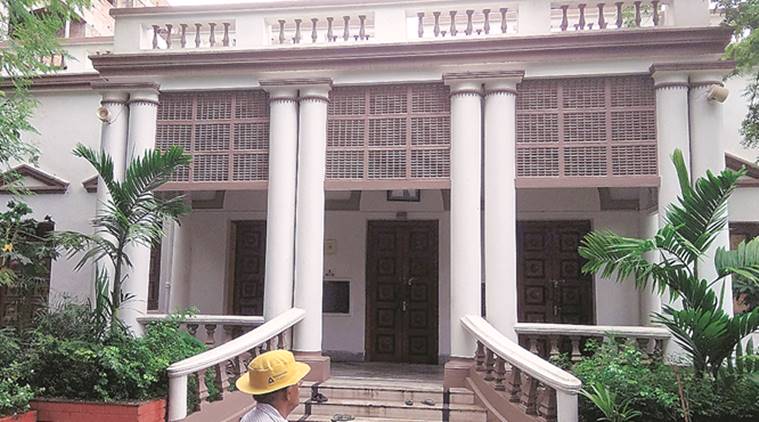 Mahatma Gandhi spent Independence eve in Hyderi Manzil. (Express photo by Partha Paul)
Mahatma Gandhi spent Independence eve in Hyderi Manzil. (Express photo by Partha Paul)
In the chaos that is Beliaghata, a colony that connects EM Bypass to the crowded Sealdah station in the West Bengal capital, the important Gandhi Bhavan is not easy to spot. This is where Mahatma Gandhi spent Independence eve to single-handedly broker peace between Hindus and Muslims during the riots following Direct Action Day. Back then, it was called the Hyderi Manzil.
Tucked away in a narrow bylane, with only a brown gateway on the main Beliaghata Road indicating the presence of Gandhi Bhavan, will be given the status of “heritage structure” on October 2, the 150th birth anniversary of the Father of the Nation.
Hectic activity is already afoot in front of the Bhavan with repairwork underway. Inside the office adjacent to the Bhavan, Papri Sarkar, joint secretary of Purba Kalikata Gandhi Smarak Samiti (PKGSS), the organisation that looks after the property, said, “Chief Minister Mamata Banerjee will declare the property a heritage property on October 2. The state government has elaborate plans for the Manzil. Adjacent properties will be acquired to realise them.”
The Bhavan is believed to have belonged to the Dawoodi Bohra community who travelled from Surat to Bengal for trade and bought extensive properties in the Beliaghata area. In 1923, the property was bought by a Sheikh Adam and was later handed down to his daughter Hoosainabadi Bengali.
The belief is that the family in residence at the time had fled during the horrific Calcutta Killings and the subsequent Naokhali riots in 1946. Inside, which now houses a small museum with a handful of enlarged black and white photographs, a picture in a corner shows the horrors of the time — Park Street strewn with corpses that even the road is not visible, and a row of vultures sitting on the buildings that run past it.
As the violence between the Hindu and Muslim communities became more brutal, Gandhi arrived in Kolkata on August 9, 1947 to take stock of the situation.
“He first went to Sodepur to the home of Gandhian Prafullah Ghosh, where he had stayed on all his previous visits to Bengal. But then H S Suhrawady requested him to stay at Hyderi Manzil because this is where the violence was the most brutal. So he shifted on August 12,” said Sankar Sanyal, president of PKGSS. “When he came, the violence eased, but did not stop. So Bapu started an indefinite fast on September 1. On September 4, the rioters, both Hindus and Muslims, surrendered before him and peace restored. Today, with the kind of polarisation and violence that is taking place across the country, I don’t think there is any place more relevant than Hyderi Manzil.”
The battle to preserve Gandhi Bhavan has not been an easy one. For years the property had been neglected because of its private ownership. In 2007, its maintenance was finally taken over by the PWD which paid salaries of the staffers and the electricity bill.
“This happened because some of us approached the then governor Gopal Krishna Gandhi who took keen interest in the matter. He was the one who ensured that an MoU was signed between the PWD and the Samhiti,” said Sanyal.
But with the state government taking a direct interest in the property, the Samhiti’s worries of protecting and preserving the property and what it stands for may finally be over.